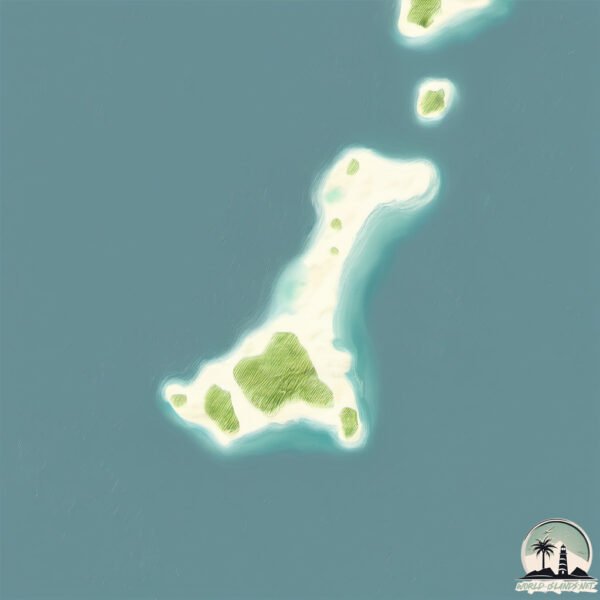Jazīrat Suyūl Ḩanīsh

Welcome to Jazīrat Suyūl Ḩanīsh, a Dry island in the Red Sea, part of the majestic Indian Ocean. This guide offers a comprehensive overview of what makes Jazīrat Suyūl Ḩanīsh unique – from its geography and climate to its population, infrastructure, and beyond. Dive into the details:
- Geography and Size: Explore the island’s size and location.
- Climate and Weather: Weather patterns and temperature.
- Topography and Nature: Uncover the natural wonders of the island.
- Infrastructure and Travelling: Insights on reaching, staying, and making the most of your visit.
- News and Headlines: Latest News.
Geography and size of Jazīrat Suyūl Ḩanīsh
Size: 3.344 km²
Coastline: 11.3 km
Ocean: Indian Ocean
Sea: Red Sea
Continent: Africa
Jazīrat Suyūl Ḩanīsh is a Small Island spanning 3.3 km² with a coastline of 11.3 km.
Archipel: –
Tectonic Plate: India – A major tectonic plate that initially moved northward at a rapid pace before colliding with the Eurasian Plate. This collision is responsible for the uplift of the Himalayas and the Tibetan Plateau.
The geographic heart of the island is pinpointed at these coordinates:
Latitude: 13.61672907 / Longitude: 42.73486678
Climate and weather of Jazīrat Suyūl Ḩanīsh
Climate Zone: Dry
Climate Details: Hot Deserts Climate
Temperature: Hot
Climate Characteristics: Dominated by extremely hot temperatures, this climate is marked by minimal rainfall and barren landscapes. Nights often experience drastic temperature drops.
Topography and nature of Jazīrat Suyūl Ḩanīsh
Timezone: UTC+03:00
Timezone places: Asia/Riyadh
Max. Elevation: 19 m
Mean Elevation: 8 m
Vegetation: Shrubland
Tree Coverage: 32%
The mean elevation is 8 m. The highest elevation on the island reaches approximately 19 meters above sea level. The island is characterized by Plains: Flat, low-lying lands characterized by a maximum elevation of up to 200 meters. On islands, plains are typically coastal lowlands or central flat areas.
Dominating Vegetation: Shrubland
Dominated by shrubs and small bushes, these areas are typical in dry, rocky, or sandy environments, as well as in regions with poor soil fertility. Jazīrat Suyūl Ḩanīsh has a tree cover of 32 %.
Vegetation: 4 vegetation zones – Diverse Island
Four distinct vegetation zones mark these islands as ecologically diverse. They might feature varied landscapes such as forests, beaches, grasslands, and rocky areas. Such diversity reflects the island’s complex ecological interactions and varied habitats, which can support a rich array of wildlife and plant species.
Infrastructure and Travelling to Jazīrat Suyūl Ḩanīsh
Does the island have a public airport? no.
There is no public and scheduled airport on Jazīrat Suyūl Ḩanīsh. The nearest airport is Assab International Airport, located 60 km away.
Does the island have a major port? no.
There are no major ports on Jazīrat Suyūl Ḩanīsh. The closest major port is AL MUKHA, approximately 65 km away.
The mean population of Jazīrat Suyūl Ḩanīsh is 94 per km². Jazīrat Suyūl Ḩanīsh is Gently Populated. The island belongs to Yemen.
Continuing your journey, Jazīrat Jabal Zuqar is the next notable island, situated merely km away.
Yemen is classified as Least developed region: Countries that exhibit the lowest indicators of socioeconomic development, with the lowest Human Development Index ratings. The level of income is Lower middle income.
News – Latest Updates and Headlines from Jazīrat Suyūl Ḩanīsh
Stay informed with the most recent news and important headlines from Jazīrat Suyūl Ḩanīsh. Here’s a roundup of the latest developments.
Please note: The data used here has been primarily extracted from satellite readings. Deviations from exact values may occur, particularly regarding the height of elevations and population density. Land area and coastline measurements refer to average values at mean high tide.
